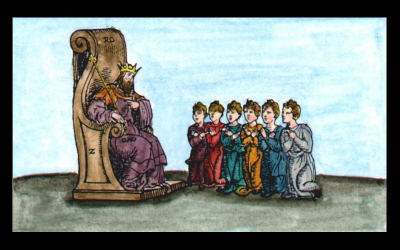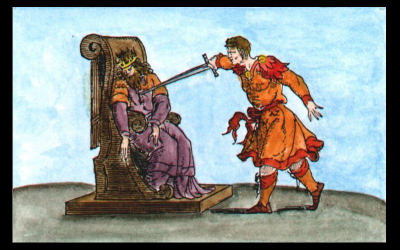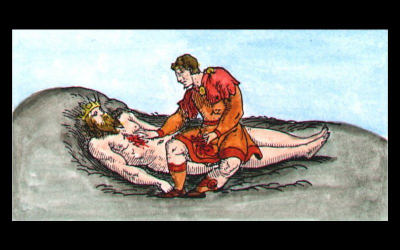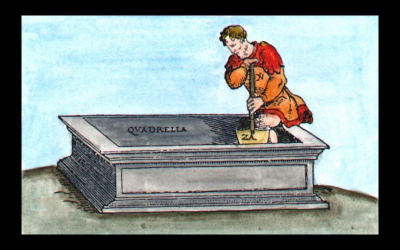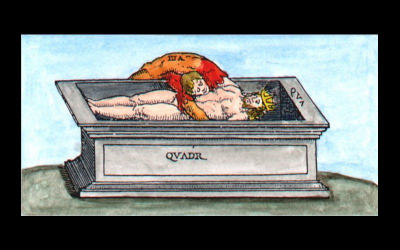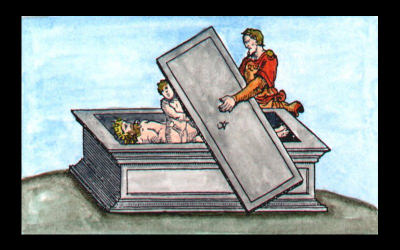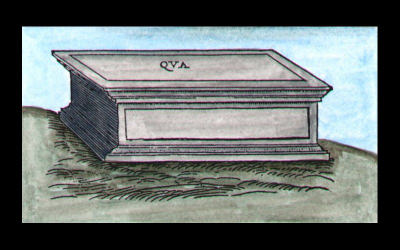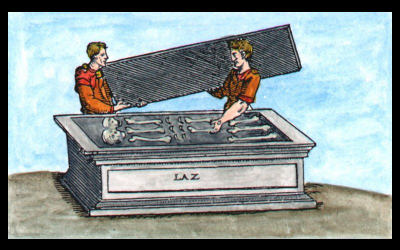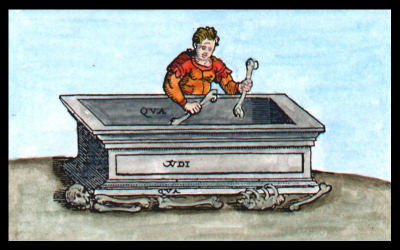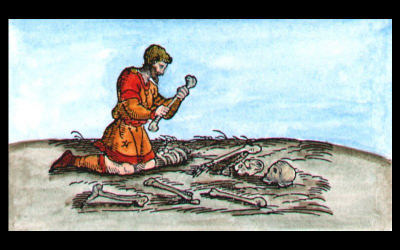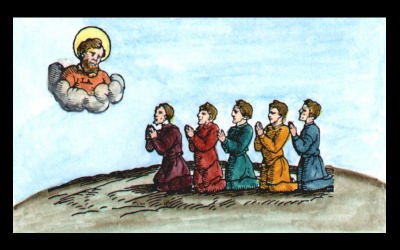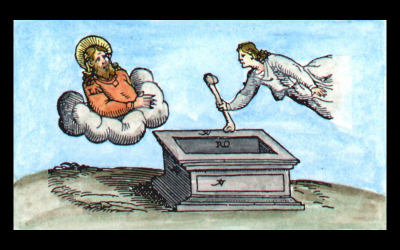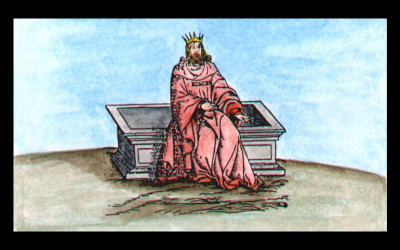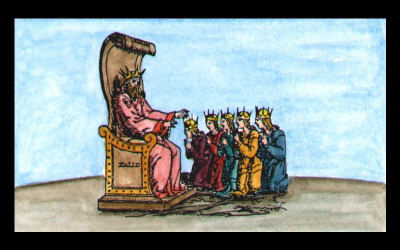
Sixteenth Century Floor
Petrus Bonus Room
Early Period Floor
Early Europe Floor Sixteenth Century Floor
Seventeenth Century Floor
Eighteenth Century Floor Floorplan Back to alchemy website
The Pretiosa margarita novella (New Pearl of Great Price) printed at Venice by Aldus in 1546 is a compendium of early alchemical texts made by Petrus Bonus, of works by Arnold of Villa Nova, Lull, Rhasis, Albertus Magnus and Michael Scot. Petrus Bonus wrote this in 1330 though no manuscripts exist from this early period, and the work was issued in printed form in the 'New Pearl of Great Price' in 1546. It is not at all certain whether the images date from an earlier period or were made for the later printed edition. They were reprinted and used in later alchemical compendia and did have some influence on the evolution of alchemical imagery. Through their sequence of 14 emblems they show a simple death of the king with his subsequent resurrection. This is a theme often explored by alchemists in their emblems and sequences - we will find this in the Splendor Solis, the Rosarium, among many others.
When we read the text we see that the father, who at the outset withholds his power from his courtiers, is killed by his son. He collects his father's blood hoping that in this lay his power. He then buries the body in a tomb, but in emblems 5 and 6 he himself is also forced into the tomb with the body of his father. This is perhaps typical of alchemical symbolism. We do not here have a simple resurrection (merely paralleling say the Christian or earlier classical myths), but here the King is buried with the agent which killed him. Both of these have to be transformed through the alchemical metamorphosis. The sepulchre is closed and after a time some of the bones are removed and placed upon the earth. The courtiers pray to God and a series of angels are sent to place successive parts of the bones onto the earth. Here we are clearly seeing an emblematic depiction of an actual physical process. The 'bones' are part of the decomposed substance in the alchemist's flask, while the 'angels' are a series of operations which transform this substance gradually through the colour cycle from black, to white, then yellow and finally red. This is only sketched in the images, but clearly stated in the text. With the final red stage the king resurrects from his tomb and now transformed through absorbing that which led to his death, he now distributes his power to his servants and his son.
This sequence obviously is an allegorisation of an actual cycle of alchemical processes carried out in the laboratory. The text in which this appears itself is quite early (14th century) so we see here an early attempt to translate actual physical work into a series of emblems.
